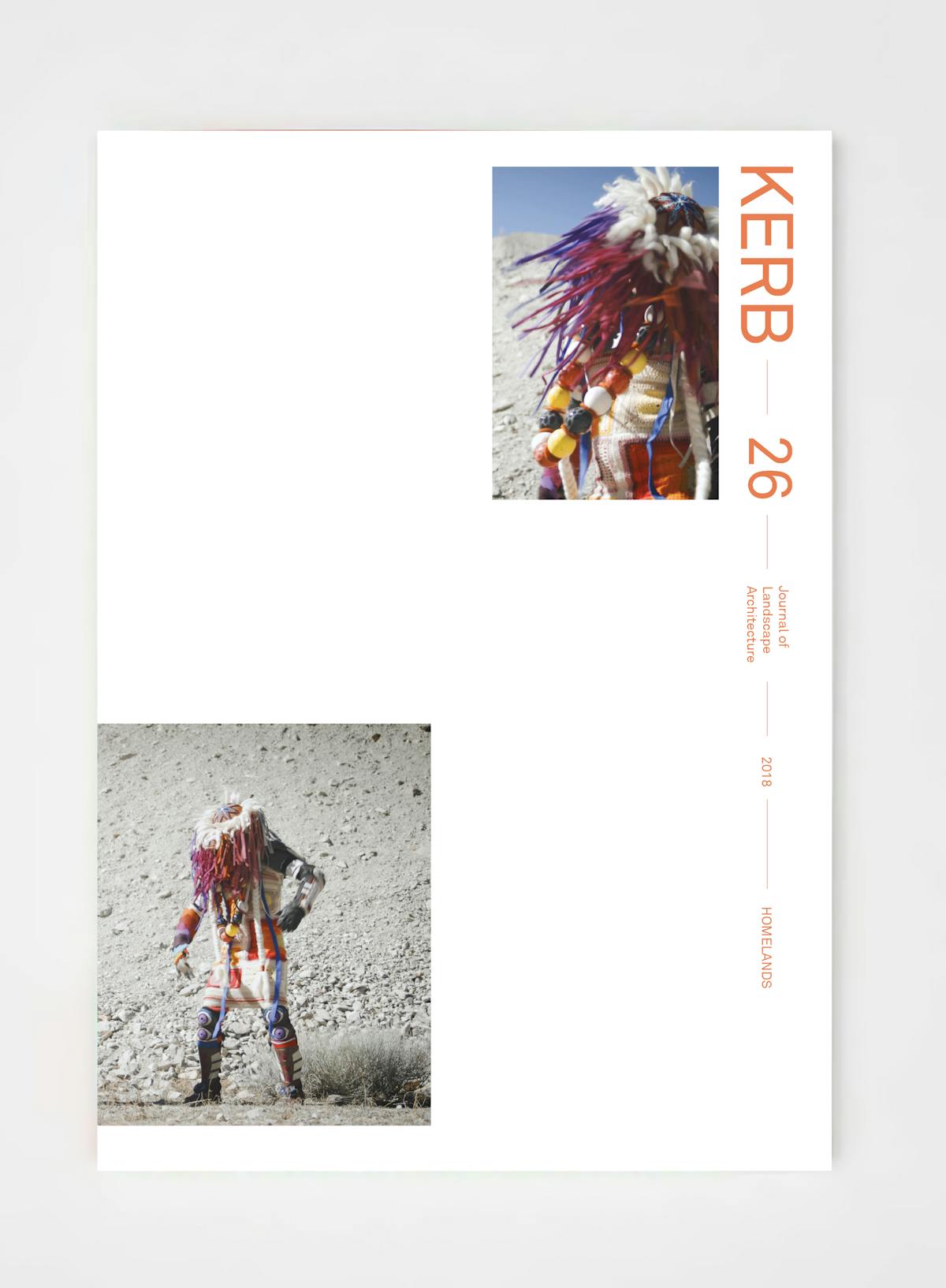Over the last 600 years, European colonial expansion and resource extraction has reshaped the globe. It has displaced and marginalised myriad peoples, relationships and lands across the planet and resulted in the deep hurt and fracture we now witness across our contemporary ‘global community’.
Landscape architecture, which we define as a Western school of thought born of the English Romantic movement, is a discipline produced by, and so complicit in, these power structures.
Moreover, landscape architects today operate with a degree of influence over the authorship of space. Should landscape architects wish to, they could assist in erasing proud histories with an idle stroke on a page. So too, by engaging in careful collaboration, they could begin to work in new ways with traditional custodians and other groups that Western societies have tended in the past to at best ignore and at worst suppress.
With this in mind, the editors of Kerb 26 walked toward each other on the theme “Homelands”, defined in our eyes as aiming to shine a light on the global conditions and prospects of fragmented, displaced and marginalised peoples as well as the complex realities of often asymmetric, cross-cultural exchange.
Is landscape architecture not a discipline that prides itself on an embrace of multiplicity? Ian McHarg’s work in ecology teaches us that a complex system is a healthy and resilient one, Giles Clement’s ‘Third Landscape’ embraces not the freedom of growth, but specifically the celebration of small, fragile and niche ecologies, and the German industrial parks movement positions the discipline clearly as having the capacity to not just embrace history, but support destabilised life-worlds as they consolidate and expand their role into the twenty-first century.
Of course, we are not suggesting that landscape architects and designers do, or should, hold any kind of monopoly over the production of space. Indeed, a large body of work presented in this journal is of a vernacular nature; produced by individuals and small groups specifically because the larger European-derived design traditions have failed to cater to their needs and practices. While our journal prioritises the accounts of homelands that have been threatened, attacked or subsumed, we hope the reader will bear in mind the broader readings of the theme, wherein we all have a homeland.
We hope that in acknowledging the importance of homelands as essential to everyone, we introduce a common element to an otherwise disparate theme: the earth. The earth as home raises notions of responsibility, not only toward a delimited area prescribed as ‘home’, but toward our planet as a whole.
There are some within the design fields who already embrace one or more of these readings of homelands, and in doing so are already counteracting deeply ingrained standards and norms in their respective disciplines. Vernacular or “ethno-architects” are at the same time working on the production of their own spaces, this generates a climate with unprecedented opportunity for the expression of thoroughly varied “homelands”. And so Kerb 26 highlights and celebrates the work of the many among us already taking steps in this direction, as well as providing examples, inspiration and confidence for others who hope to do so in the future.
The journal has been divided into three broad categories, all of which centre on the idea of engaging with the issue of homelands in different ways. Based on our observations, some practitioners engage resiliently while others engage critically and yet more engage collaboratively.
Obviously, there is a clear overlap and interface between these categories. We definitely appreciate the irony of broadly categorising a journal that is meant to celebrate work that sits in defiance of standard categorisations. However, we believe that framing the work in terms of how different practitioners engage with the issue helps to provide readers with clear actionable ways of engaging with the theme.
Engaging Resiliently
Many contributors have shone a light on resilient designs and practices. These involve work that has safeguarded cultural practices through design thinking. Gautham Sarang celebrates the vernacular community-sourced architecture of Kerala. Not always tidy and rarely economically sensible, these works are nonetheless an embodiment of a long-developed sense of place. In even starker response to the colonial settler, Emelie Desrochers-Turgeon celebrates the nomadicity of adaptive architecture in Nunavut. By appropriating colonial buildings, local people have developed mobile structures that allow for the transport of goods between communities, and so fought back against the imposition of a sedentary lifestyle.
Engaging Critically
Other contributors have taken a more critical approach to the theme. These include essays, design propositions and analyses that aim to interrogate and question contemporary modes of practice and the effects that these have on Indigenous and other minority groups. Maria Trovato documents the exhausting spatial hardships imposed on both refugees and their hosts after crossing into temporary homelands. Julia Watson critiques the societal ignorance of Indigenous innovations. And Pierre Belanger unpacks the entangled history of Canada’s national parks with the forced resettlement of Indigenous peoples. By engaging with contemporary Western discourse on its own terms these practitioners do a lot to hold the inadequacies and problems of our societies to account.
Engaging Collaboratively
Another group of contributors are those who we see as engaging collaboratively. These are practitioners who walk the line of what Sophia Pearce and Jock Gilbert call the “cultural interface”. Jefa Greenaway and Indigenous Architecture and Design Victoria’s engagement with the University of Melbourne and Australia’s broader architectural community is a fantastic example of this more pragmatic approach. These practitioners look not only at supporting the oppressed or questioning the oppressor, but produce work that hopes to build and strengthen ties between these traditionally oppositional parties. In sum, Kerb 26 is about engagement with “homelands”. In celebrating the work of a wide range of practitioners already engaged with the issue, we hope our journal provides a pathway for others to do the same in an informed, invigorated and respectful way.
